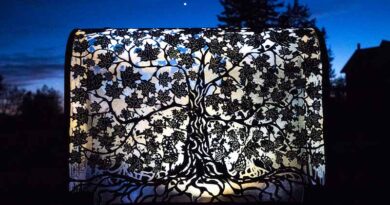Why Consider a Mudroom?
A mudroom is an invaluable addition to many homes, especially in regions with unpredictable weather. Acting as a transitional space between the outdoors and your living areas, it helps keep your home clean and organized.
Whether for storing coats, shoes, bags, or outdoor equipment, a functional mudroom should be practical, well-organized, and tailored to your household’s needs. Here’s my guide to creating an efficient mudroom in your home.
Identify Your Household’s Needs
Before designing your mudroom, assess your family’s specific needs. Consider your daily activities and the items you need to store. Do you live in an area with snow and mud? Do you have children with backpacks, sports gear, or outdoor toys? Do you need space for pet items or seasonal equipment like bikes or camping gear? Understanding your unique needs will help you create a mudroom that serves its purpose effectively.
Select the Right Location
A mudroom should be located near the main entry points of your home, such as the back door, near the garage, or even the front door. The space should be large enough to accommodate everyone who enters but compact enough to remain functional. If you’re repurposing a space like a hallway, laundry room, or closet, ensure it can handle the necessary storage while offering easy access to the outdoors.
Maximize Storage with Smart Organization
Effective storage is key to a functional mudroom. Consider these essential features:
• Hooks and Pegs: Wall-mounted hooks or pegs are great for hanging coats, backpacks, and leashes. Install them at varying heights to accommodate all family members.
• Cubbies or Lockers: Cubbies work well for shoes, boots, and bags, while lockers are ideal for organizing children’s school bags and sports equipment.
• Benches or Seating Areas: A built-in bench provides a place to sit while putting on or removing shoes. Some benches offer extra storage underneath, perfect for shoes or seasonal gear.
• Shelving: Open shelves are ideal for smaller items like hats and gloves. Place them at reachable heights for easy access.
• Storage Bins or Baskets: Bins or baskets help keep smaller items like scarves and cleaning supplies organized. Labeling these can make finding things easier.
Choose Durable, Easy-to-Clean Materials
Mudrooms can get dirty quickly, so select materials that are easy to maintain:
• Flooring: Opt for waterproof or water-resistant flooring such as tile, vinyl, rubber, or engineered wood. These options handle wet shoes and boots while being easy to clean. In areas with snow, consider a non-slip surface to prevent accidents.
• Walls: Use washable paint or tile for easy cleanup. Wainscoting or beadboard paneling on the lower half of the walls can protect against dirt and moisture.
• Countertops and Storage: Choose materials like quartz, laminate, or metal for countertops and shelving. These are durable, moisture-resistant, and easy to maintain.
Add Lighting and Ventilation
Mudrooms often lack natural light, so proper lighting is essential. Install overhead lights or sconces to brighten the space. Task lighting near hooks or shelves can be helpful for visibility. If the room is prone to humidity, especially when wet coats are hung, consider adding a ventilation fan or ensuring good airflow to keep the area dry and fresh.
Create a Seasonal Rotation System
A mudroom’s function changes throughout the year, so it’s important to have a system for rotating seasonal items. Set up hooks or storage areas for different clothing, like coats in winter, rain gear in spring, and sun hats in summer. This keeps the space from becoming overcrowded and ensures that only current-season items are stored.
Personalize the Space
While functionality is the main focus, your mudroom can still be aesthetically pleasing. Add personal touches like colourful hooks, a fun rug, or decorative baskets to make the space more inviting. If the mudroom is part of an open-plan area, choose décor that complements the overall style of the home.
A well-designed mudroom to me is more than just a storage area—it’s a functional, organized, and welcoming part of your home. By selecting the right location, incorporating smart storage solutions, using durable materials, and adding a touch of personality, you can create a mudroom that keeps your home clean and organized.
 Designer Natalia Hara is the co-founder and Principal Designer for One Group Build.
Designer Natalia Hara is the co-founder and Principal Designer for One Group Build.
The team provides full-service design and new build construction and renovation, Servicing Toronto, GTA, Florida, and NY onegroupbuild.com @onegroupdesignbuild




